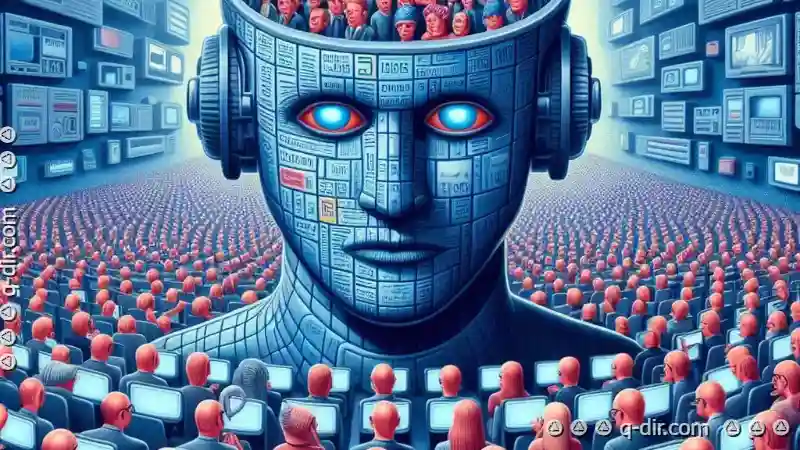One such method that has left an indelible mark on how we interact with the web is through the use of favorites or bookmarks. This seemingly simple tool ...
 plays a pivotal role in shaping how we navigate the vast expanse of cyberspace. In this blog post, we delve into the cult of the saved link: how favorites have shaped our minds and perceptions when it comes to digital navigation. In today's digital age, where information overload is a constant companion, our methods for organizing and accessing online content have evolved significantly.
plays a pivotal role in shaping how we navigate the vast expanse of cyberspace. In this blog post, we delve into the cult of the saved link: how favorites have shaped our minds and perceptions when it comes to digital navigation. In today's digital age, where information overload is a constant companion, our methods for organizing and accessing online content have evolved significantly.1. The Evolution of Digital Bookmarks
2. Psychology Behind Favorites
3. How Favorites Affect Perception
4. The Echo Chamber Effect
5. The Role of Recommendations in Building Favorites
6. The Impact of Digital Minimalism
7. The Future of Digital Navigation
8. Conclusion: The Power of Personal Control
1.) The Evolution of Digital Bookmarks
The history of bookmarks traces back to the early days of the internet when users had to manually type in URLs or click through links to access their favorite websites. With technological advancements, browsers like Firefox, Chrome, and Safari introduced bookmarking features that made it easier for users to categorize and store web pages. This was a revolutionary step as it allowed users to efficiently manage an extensive list of sites, making navigation more personalized and effective.
2.) Psychology Behind Favorites
Favorites or bookmarks are essentially shortcuts to your most frequently visited websites. Psychologically, these aren't just simple storage solutions; they are psychological anchors that help reduce cognitive load by providing a direct route to information. The mere presence of favorites on the browser screen can provide comfort and familiarity, making users feel more in control of their online environment.
3.) How Favorites Affect Perception
Favorites significantly affect how we perceive websites' importance or relevance. Users tend to associate certain colors, shapes, and positions with specific bookmarks based on personal associations, usage patterns, and initial impressions. Over time, these favorites become part of our mental map of the web, influencing which sites are easily accessible and which might be overlooked. This selective highlighting can skew perceptions about what is important or relevant in one’s digital life.
4.) The Echo Chamber Effect
Favorites create an echo chamber effect where users tend to revisit sites that are frequently bookmarked, reinforcing the content they already consume. This self-reinforcing cycle can lead to a filter bubble effect where people see and interact with information predominantly from sources they have chosen as favorites. While this might be comforting for maintaining existing beliefs, it also limits exposure to diverse viewpoints and new ideas.
5.) The Role of Recommendations in Building Favorites
Recommendation systems play a crucial role in determining which sites make it into the favorites list. Algorithms often base recommendations on past usage patterns or demographics, but these can sometimes lead to biased selections that don't reflect true user interests. Understanding this dynamic helps users critically evaluate what they bookmark and ensures diversity in their digital footprint.
6.) The Impact of Digital Minimalism
With increasing awareness about the downsides of information overload, there is a shift towards digital minimalism. This philosophy encourages users to curate their favorites more selectively, focusing on quality over quantity. By doing so, individuals can enhance focus and reduce mental clutter by ensuring that only essential sites are bookmarked and readily accessible.
7.) The Future of Digital Navigation
As technology continues to evolve with the introduction of AI and machine learning, personalization in navigation tools is expected to become even more sophisticated. This could lead to a shift where not just favorites but entire personalized 'digital homes' are developed based on user behavior and preferences, providing tailored experiences that are unique to each individual.
8.) Conclusion: The Power of Personal Control
Favorites or bookmarks offer a powerful tool for personal control over one’s digital experience. They reflect our evolving interests, habits, and needs. However, it is crucial to be aware of how these tools shape our perceptions and biases. By actively managing and critically evaluating what we save as favorites, users can ensure that their navigation aids serve as effective guides rather than blinders.
In conclusion, the journey through cyberspace with bookmarks is not just about reaching destinations but shaping one’s digital identity and mental map of the online world. Understanding how this psychological contract works can lead to more intentional and enriching internet experiences.

The Autor: / 0 2025-04-19
Read also!
Page-

The Best Tools for Pasting Files Safely and Efficiently
The need to safely and efficiently transfer files between devices has become increasingly important. Whether you're transferring large multimedia ...read more

How to Customize Toolbars in Single-Pane Mode
When it comes to single-pane applications, toolbars play a pivotal role in guiding users through the application's features and actions. This blog ...read more

The Invisible Hand of Regulations in Deletion Practices.
One of the most common tasks is deleting unwanted or unnecessary files to free up space, maintain order, or adhere to data privacy regulations. This ...read more